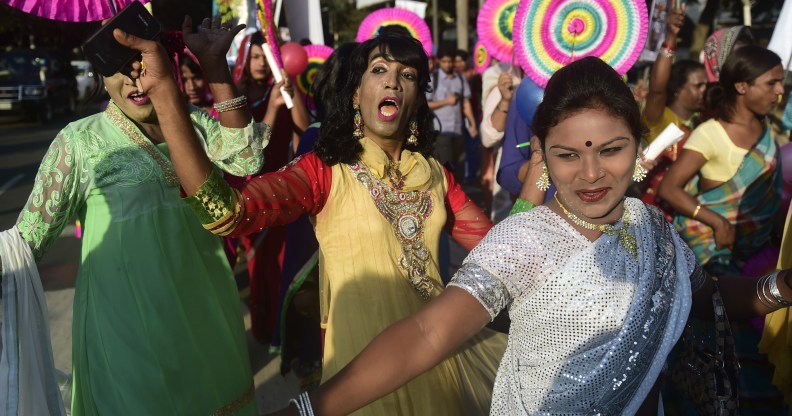A transgender woman just made history in the ultra-conservative Muslim-majority Bangladesh

Bangladeshi hijras dance in the street during a rally. (Munir Uz Zaman/Getty)
Bangladeshi hijras dance in the street during a rally. (Munir Uz Zaman/Getty)
In a country where it is not only illegal to be gay, but laws are defined by traditional and strict religious views, a trans woman being elected councillor seems like a fever dream.
But for Bangladeshi garment shop owner Pinki Khatun, it’s a reality.
Khatun was elected as councillor for Kotchandpur, a rural town in the country’s westside, after beating her nearest rival by more than 4,000 votes earlier this week, reported The Straits Times.
“I am very delighted. I campaigned door-to-door and people have responded positively,” said Khatun.
“I did not face any discrimination or hate campaigns.”
Trans councillor: ‘My aim is to work for the betterment of women and protect their rights’.
Local police chief Mahbubul Alam confirmed the win for Khatun on Monday.
The 37-year-old is a youth wing official of the ruling Awami League party.
She campaigned as an independent candidate in the 200,000-population town of Kotchandpur after the party did not back anyone.
In parts of South Asia, the term hijra refers to certain women, intersex and non-binary people assigned male at birth. While some hijra are trans, not all trans people are hijra.
The community has received some legal recognition in the last decade, but work continues from tireless campaigners to enshrine the wider LGBT+ community with better protections while improving cultural attitudes.
“My aim is to work for the betterment of women and protect their rights,” said Khatun.
“I’ll work for hijras so they can live honourably in society.”
Hijra community in Bangladesh steadily gaining rights.
Such a society has steadily warmed to hirjas, who occupy a special, near-sacred place in Hinduistic beliefs and ancient texts.

In 2013, the Bangladeshi government formally recognised hijras as a separate gender on official documents and the option to identify as such was later added to voting forms for the first time this year.
Around 10,000 people in the country identify as hijras, according to data, but little to no policies protect the community and government bodies have been accused in the past of enforcing humiliating and strenuous medical examination on them.
At least 1,000 hijras took part in Bangladesh’s first ever Pride march in November 2014, marking one year since the government recognised them as a third gender.

